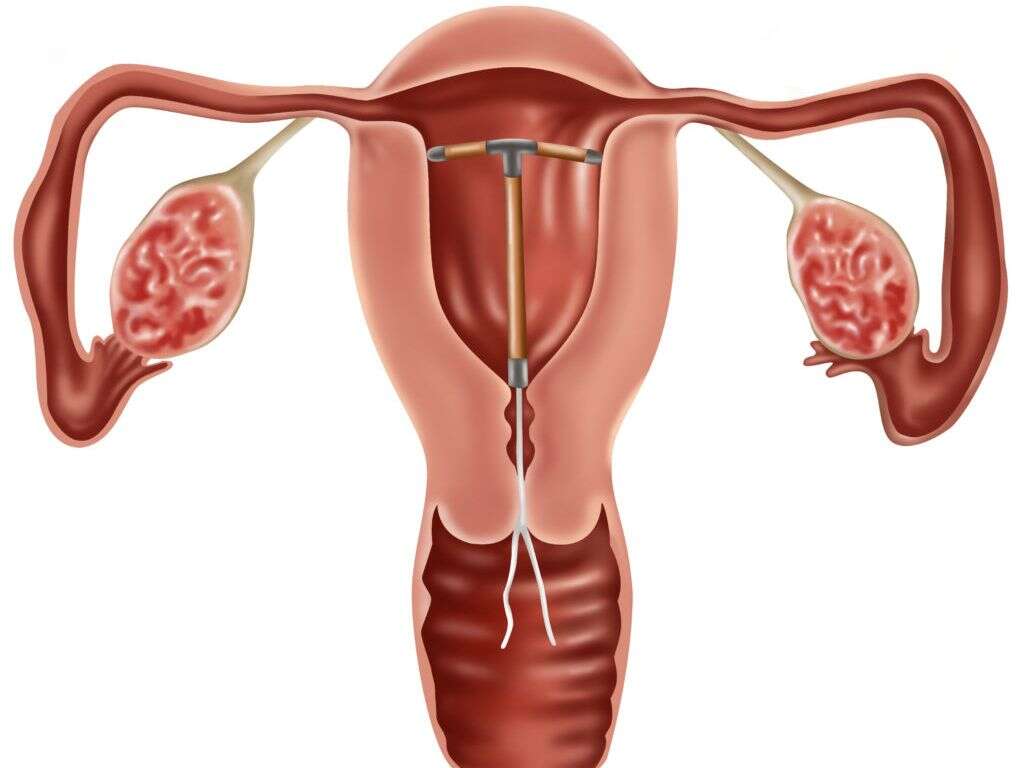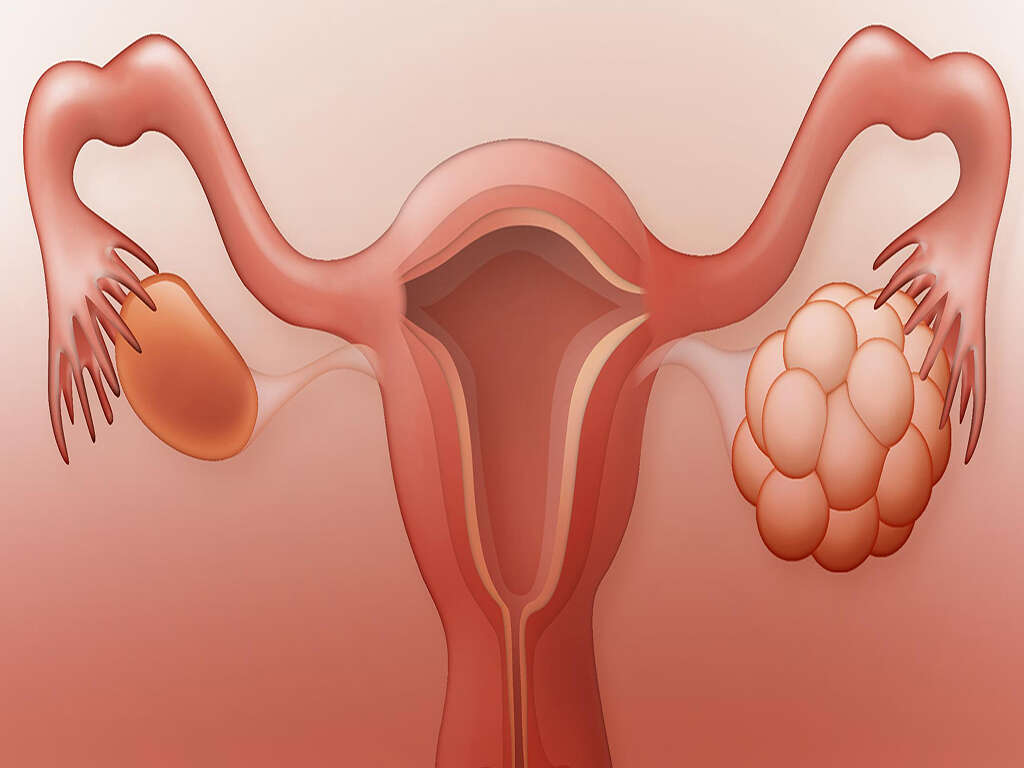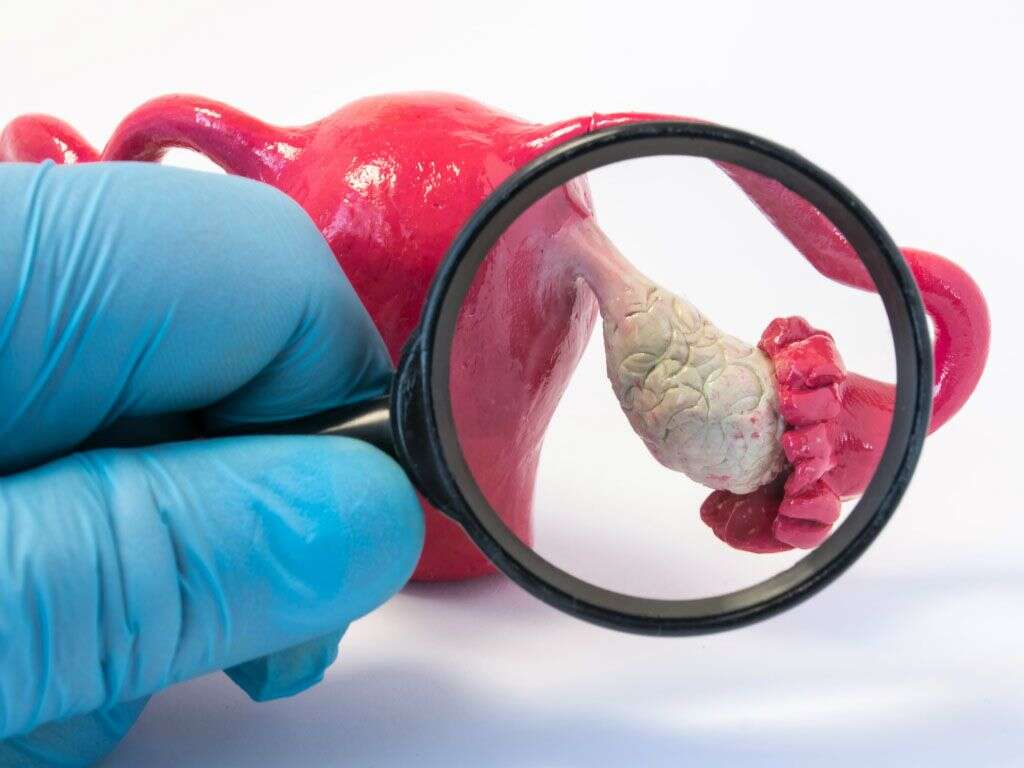Polycystic Ovary Syndrome Symptoms
 Article Sources
Article Sources
- 1. Aboud AL AM, Zito PM. Alopecia. [Updated 2020 Jun 29]. In: StatPearls [Internet]. Treasure Island (FL): StatPearls Publishing; 2020 Jan-. Available from: https://www.ncbi.nlm.nih.gov/books/NBK538178/
- 2. Gibson E, Mahdy H. Anatomy Abdomen and Pelvis, Ovary. [Updated 2019 Aug 10]. In: StatPearls [Internet]. Treasure Island (FL): StatPearls Publishing; 2020 Jan-. Available from: https://www.ncbi.nlm.nih.gov/books/NBK545187/
- 3. Harris, H R et al. “Long and irregular menstrual cycles, polycystic ovary syndrome, and ovarian cancer risk in a population-based case-control study.” International journal of cancer vol. 140,2 (2017): 285-291. doi:10.1002/ijc.30441
- 4. Johansson, Julia, and Stener-Victorin, Elisabeth. “Polycystic ovary syndrome: effect and mechanisms of acupuncture for ovulation induction.” Evidence-based complementary and alternative medicine : eCAM vol. 2013 (2013): 762615. doi:10.1155/2013/762615
- 5. Keen, Mohammad Abid et al. “Cutaneous Manifestations of Polycystic Ovary Syndrome: A Cross-Sectional Clinical Study.” Indian dermatology online journal vol. 8,2 (2017): 104-110. doi:10.4103/2229-5178.202275
- 6. Legro RS. Evaluation and Treatment of Polycystic Ovary Syndrome. [Updated 2017 Jan 11]. In: Feingold KR, Anawalt B, Boyce A, et al., editors. Endotext [Internet]. South Dartmouth (MA): MDText.com, Inc.; 2000-. Available from: https://www.ncbi.nlm.nih.gov/books/NBK278959/
- 7. Ndefo, Uche Anadu et al. “Polycystic ovary syndrome: a review of treatment options with a focus on pharmacological approaches.” P & T : a peer-reviewed journal for formulary management vol. 38,6 (2013): 336-55.
- 8. Pandey A, Sonthalia S. Skin Tags. [Updated 2020 Jun 1]. In: StatPearls [Internet]. Treasure Island (FL): StatPearls Publishing; 2020 Jan-. Available from: https://www.ncbi.nlm.nih.gov/books/NBK547724/
- 9. Rasquin Leon LI, Mayrin JV. Polycystic Ovarian Disease (Stein-Leventhal Syndrome) [Updated 2019 Dec 8]. In: StatPearls [Internet]. Treasure Island (FL): StatPearls Publishing; 2020 Jan-. Available from: https://www.ncbi.nlm.nih.gov/books/NBK459251/
- 10. Spritzer PM, Barone CR, Oliveira FB. Hirsutism in Polycystic Ovary Syndrome: Pathophysiology and Management. Curr Pharm Des. 2016;22(36):5603-5613. doi:10.2174/1381612822666160720151243
Polycystic Ovarian Syndrome (PCOS) is a common disease that affects the hormonal and reproductive system in young females. To make a diagnosis, all other diagnoses must be ruled out and at least two of these three factors must be present:1Aboud AL AM, Zito PM. Alopecia. [Updated 2020 Jun 29]. In: StatPearls [Internet]. Treasure Island (FL): StatPearls Publishing; 2020 Jan-. Available from: https://www.ncbi.nlm.nih.gov/books/NBK538178/ repeated lack of ovulation,2Gibson E, Mahdy H. Anatomy Abdomen and Pelvis, Ovary. [Updated 2019 Aug 10]. In: StatPearls [Internet]. Treasure Island (FL): StatPearls Publishing; 2020 Jan-. Available from: https://www.ncbi.nlm.nih.gov/books/NBK545187/ excessive testosterone produced by the woman, and/or3Harris, H R et al. “Long and irregular menstrual cycles, polycystic ovary syndrome, and ovarian cancer risk in a population-based case-control study.” International journal of cancer vol. 140,2 (2017): 285-291. doi:10.1002/ijc.30441 presence of multiple cysts on the ovaries. It can take some time, tests, and multiple specialists in order to come to the correct diagnosis.9Rasquin Leon LI, Mayrin JV. Polycystic Ovarian Disease (Stein-Leventhal Syndrome) [Updated 2019 Dec 8]. In: StatPearls [Internet]. Treasure Island (FL): StatPearls Publishing; 2020 Jan-. Available from: https://www.ncbi.nlm.nih.gov/books/NBK459251/
Unfortunately, PCOS is associated with or can lead to other serious problems and so it is important to get diagnosed and treated early. Treatment will depend on the underlying cause and may include lifestyle changes and management of the problems that may arise.9Rasquin Leon LI, Mayrin JV. Polycystic Ovarian Disease (Stein-Leventhal Syndrome) [Updated 2019 Dec 8]. In: StatPearls [Internet]. Treasure Island (FL): StatPearls Publishing; 2020 Jan-. Available from: https://www.ncbi.nlm.nih.gov/books/NBK459251/ The following are some typical signs and symptoms of PCOS.7Ndefo, Uche Anadu et al. “Polycystic ovary syndrome: a review of treatment options with a focus on pharmacological approaches.” P & T : a peer-reviewed journal for formulary management vol. 38,6 (2013): 336-55.
1. Abnormally Large Ovaries
Ovaries are small, female reproductive organs that contain egg cells and produce hormones. Two ovaries are found deep within the pelvis on either side of the uterus and each are about 2 cm x 3.5 cm x 1cm. The size of the ovaries will slightly vary from person to person and can also change depending upon age and something being not quite right with the ovary.2Gibson E, Mahdy H. Anatomy Abdomen and Pelvis, Ovary. [Updated 2019 Aug 10]. In: StatPearls [Internet]. Treasure Island (FL): StatPearls Publishing; 2020 Jan-. Available from: https://www.ncbi.nlm.nih.gov/books/NBK545187/
The presence of cysts, especially a large number of cysts or large cysts, will increase the size of the ovaries. Typically, an ultrasound will be done to measure the ovaries and the cysts within.2Gibson E, Mahdy H. Anatomy Abdomen and Pelvis, Ovary. [Updated 2019 Aug 10]. In: StatPearls [Internet]. Treasure Island (FL): StatPearls Publishing; 2020 Jan-. Available from: https://www.ncbi.nlm.nih.gov/books/NBK545187/
2. Many Small Cysts on the Ovaries
Ovarian cysts are actually quite common and form from the changing levels of hormones during a women’s period. They will come and go and may or may not cause symptoms such as pain. These more typical and naturally occurring cysts are called simple or functional cysts. Cysts can have no symptoms at all, be very uncomfortable, cause abnormal bleeding, or cause an array of complications.2Gibson E, Mahdy H. Anatomy Abdomen and Pelvis, Ovary. [Updated 2019 Aug 10]. In: StatPearls [Internet]. Treasure Island (FL): StatPearls Publishing; 2020 Jan-. Available from: https://www.ncbi.nlm.nih.gov/books/NBK545187/
Abnormal cysts are identified when there are many of them present at one time, if they are very large, or if they tend to not go away with the normal changing hormonal levels that occurs during a women’s cycle.2Gibson E, Mahdy H. Anatomy Abdomen and Pelvis, Ovary. [Updated 2019 Aug 10]. In: StatPearls [Internet]. Treasure Island (FL): StatPearls Publishing; 2020 Jan-. Available from: https://www.ncbi.nlm.nih.gov/books/NBK545187/ Many small cysts on the ovaries is one of the most common symptoms of PCOS where about 70% of women will have ultrasound confirmed cysts.7Ndefo, Uche Anadu et al. “Polycystic ovary syndrome: a review of treatment options with a focus on pharmacological approaches.” P & T : a peer-reviewed journal for formulary management vol. 38,6 (2013): 336-55.
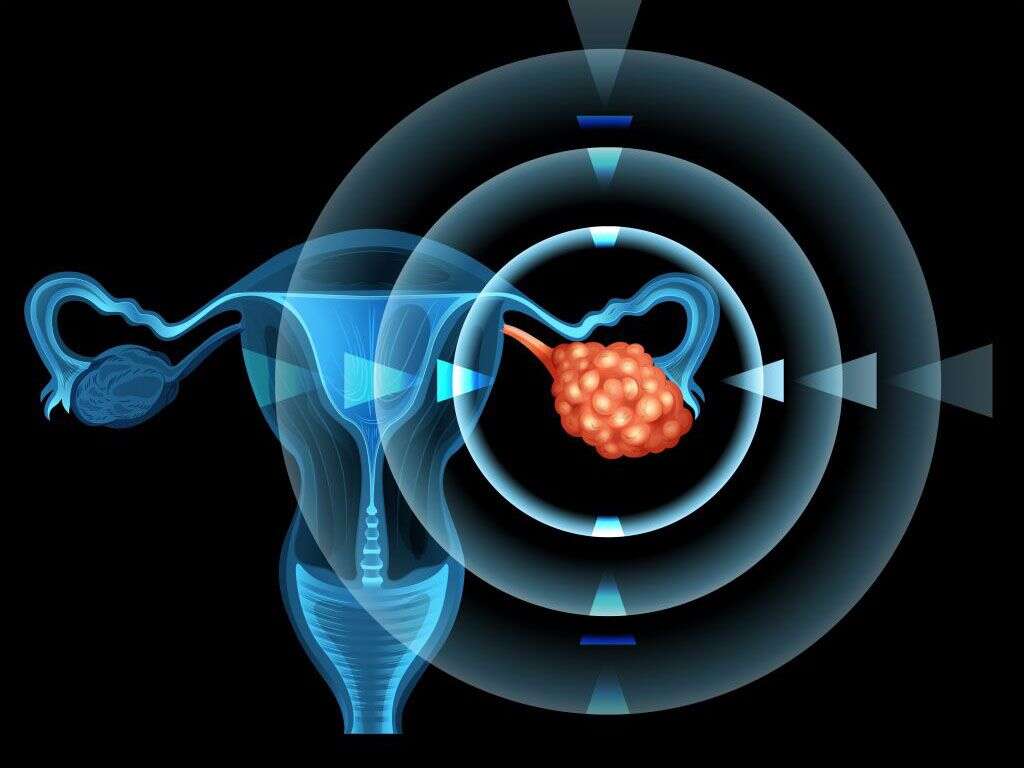
3. Irregular Periods
Most of the time, a women’s cycle will last about 28 days. It is normal for some women to have a slightly longer or shorter cycle. Some may also have irregular periods where there is no consistent timing for when a cycle starts and ends. Period cycles that vary too far from the norm may indicate that something is wrong especially if the woman usually has a very regular cycle.
Those with PCOS will often have very long and irregular periods. This is due to the abnormal levels of hormones typical of the syndrome.3Harris, H R et al. “Long and irregular menstrual cycles, polycystic ovary syndrome, and ovarian cancer risk in a population-based case-control study.” International journal of cancer vol. 140,2 (2017): 285-291. doi:10.1002/ijc.30441
4. Pain within the Pelvis
Pelvic pain, particularly in women, is a vague symptom that can indicate many happenings within the body. Pelvic pain can be due to something going on with the pelvic floor (the muscular group that lines the pelvis), the digestive system, the reproductive system, and others. It could be a totally benign symptom or it could indicate something more sinister that needs attention.
One cause of pelvic pain is the presence of ovarian cysts.2Gibson E, Mahdy H. Anatomy Abdomen and Pelvis, Ovary. [Updated 2019 Aug 10]. In: StatPearls [Internet]. Treasure Island (FL): StatPearls Publishing; 2020 Jan-. Available from: https://www.ncbi.nlm.nih.gov/books/NBK545187/ Since ovarian cysts are one of the most common signs of PCOS it is no wonder that pelvic pain is a symptom of PCOS.
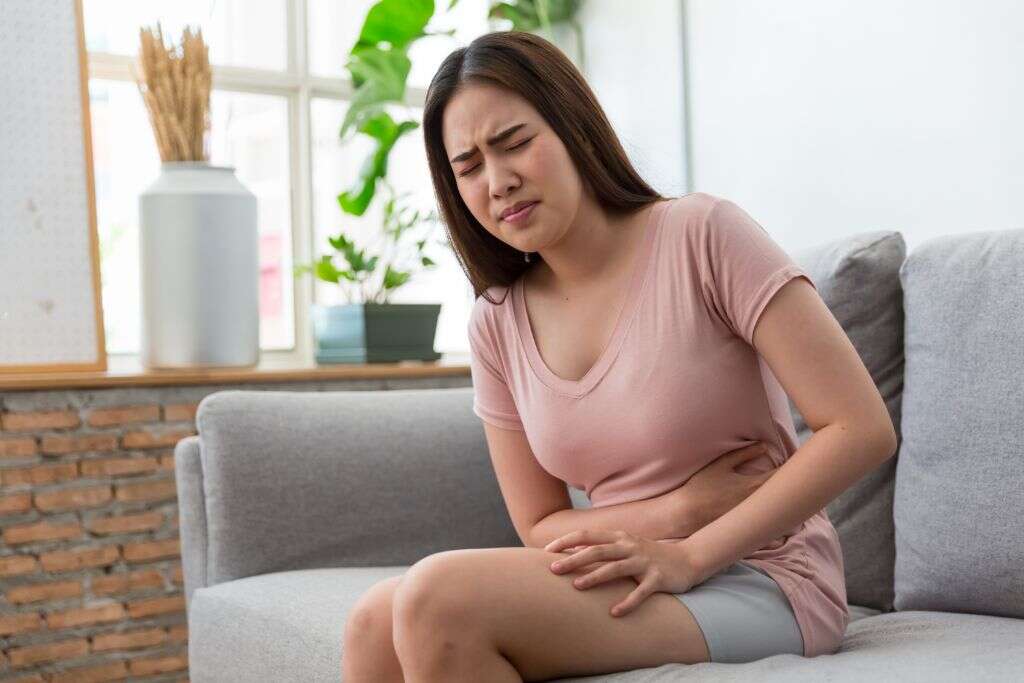
5. Dark, Coarse Body Hair
Women with dark, coarse body hair that grows in places typical of a man (upper lip, back, etc.) are often described to have hirsutism. It is caused by increased testosterone levels in a woman’s body. This is usually treated with medications and the particular one prescribed will be based on why the testosterone levels are so high in the first place.10Spritzer PM, Barone CR, Oliveira FB. Hirsutism in Polycystic Ovary Syndrome: Pathophysiology and Management. Curr Pharm Des. 2016;22(36):5603-5613. doi:10.2174/1381612822666160720151243
High testosterone levels are one of the most common characteristics of PCOS.7Ndefo, Uche Anadu et al. “Polycystic ovary syndrome: a review of treatment options with a focus on pharmacological approaches.” P & T : a peer-reviewed journal for formulary management vol. 38,6 (2013): 336-55. These high levels are responsible for the 78% of people with PCOS who have hirsutism5Keen, Mohammad Abid et al. “Cutaneous Manifestations of Polycystic Ovary Syndrome: A Cross-Sectional Clinical Study.” Indian dermatology online journal vol. 8,2 (2017): 104-110. doi:10.4103/2229-5178.202275 and, in fact, PCOS is the most common cause of hirsutism.10Spritzer PM, Barone CR, Oliveira FB. Hirsutism in Polycystic Ovary Syndrome: Pathophysiology and Management. Curr Pharm Des. 2016;22(36):5603-5613. doi:10.2174/1381612822666160720151243
6. Hair Loss
Hair loss, termed alopecia, includes the loss of hair on any part of the body vs only the scalp. It can be caused by aging, autoimmune disease, hormones, thyroid issues, and others. Alopecia can be diagnosed with a Hair Pull Test where 40-60 hairs are gently pulled and if more than 6 hairs come out then the test is deemed positive. Generally, treatment will be based upon why the hair loss is occurring.1Aboud AL AM, Zito PM. Alopecia. [Updated 2020 Jun 29]. In: StatPearls [Internet]. Treasure Island (FL): StatPearls Publishing; 2020 Jan-. Available from: https://www.ncbi.nlm.nih.gov/books/NBK538178/
In the case of PCOS, alopecia is due to the high testosterone levels.7Ndefo, Uche Anadu et al. “Polycystic ovary syndrome: a review of treatment options with a focus on pharmacological approaches.” P & T : a peer-reviewed journal for formulary management vol. 38,6 (2013): 336-55. Treatment will therefore be focused on lowering testosterone levels likely through medication. 31% of those with PCOS will show signs of alopecia.5Keen, Mohammad Abid et al. “Cutaneous Manifestations of Polycystic Ovary Syndrome: A Cross-Sectional Clinical Study.” Indian dermatology online journal vol. 8,2 (2017): 104-110. doi:10.4103/2229-5178.202275
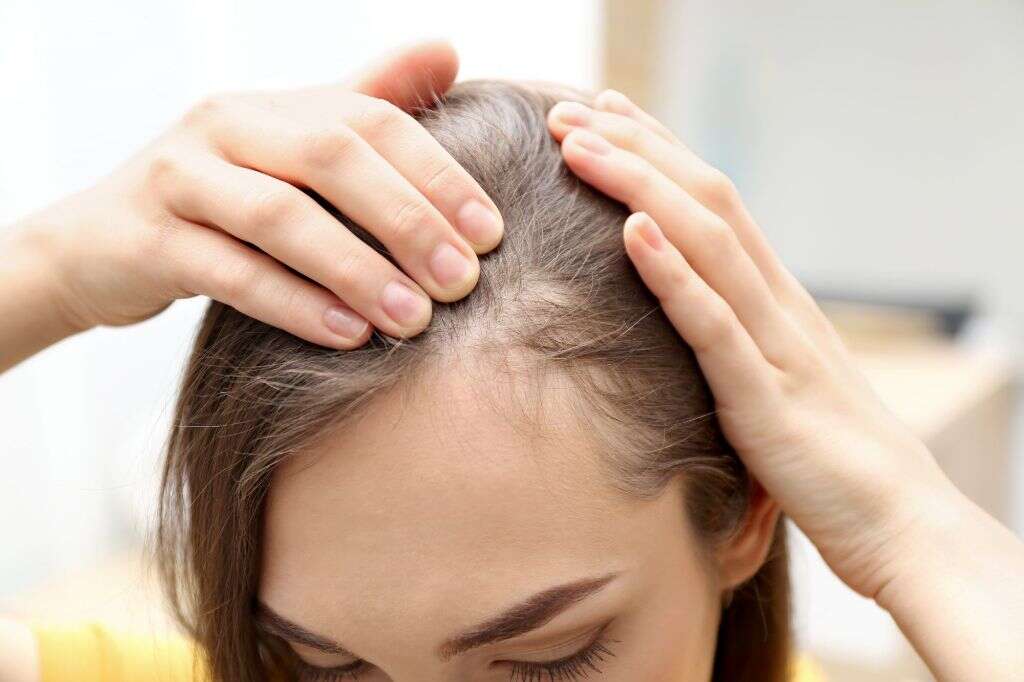
7. Acne
Acne is a frustrating condition that can be caused by a multitude of factors. There are so many products out there that claim to cure acne but if the actual reason for acne is not being addressed then those products will not work. For example, acne that is caused by irregular hormones will not respond to a simple face wash bought at the local drugstore. This type of acne would need to be treated by stabilizing the hormone that is out of whack.
As mentioned earlier, high testosterone levels are a common sign of PCOS and these levels can cause acne.7Ndefo, Uche Anadu et al. “Polycystic ovary syndrome: a review of treatment options with a focus on pharmacological approaches.” P & T : a peer-reviewed journal for formulary management vol. 38,6 (2013): 336-55. The prevalence of acne in those with PCOS is 48%.5Keen, Mohammad Abid et al. “Cutaneous Manifestations of Polycystic Ovary Syndrome: A Cross-Sectional Clinical Study.” Indian dermatology online journal vol. 8,2 (2017): 104-110. doi:10.4103/2229-5178.202275 Treating the levels of testosterone should help to clear up the acne.
8. Darkened Patches of Skin
In a study done by Keen, et al. in 2017, acanthosis nigricans was described as “velvety, brown, thickened plaques with accentuated skin markings.” It is essentially a darkened, abnormal patch of skin that can be a sign of various problems such as diabetes, a reaction to medication, or PCOS.5Keen, Mohammad Abid et al. “Cutaneous Manifestations of Polycystic Ovary Syndrome: A Cross-Sectional Clinical Study.” Indian dermatology online journal vol. 8,2 (2017): 104-110. doi:10.4103/2229-5178.202275
30% of people with PCOS had acanthosis nigricans most commonly in the armpit, the neck, and the crease of the elbow.5Keen, Mohammad Abid et al. “Cutaneous Manifestations of Polycystic Ovary Syndrome: A Cross-Sectional Clinical Study.” Indian dermatology online journal vol. 8,2 (2017): 104-110. doi:10.4103/2229-5178.202275 Hormonal levels are the cause of this sign as with just about every other sign or symptom of PCOS. It should also be noted that acanthosis nigricans is a common symptom of obesity and that obesity is associated with PCOS.6Legro RS. Evaluation and Treatment of Polycystic Ovary Syndrome. [Updated 2017 Jan 11]. In: Feingold KR, Anawalt B, Boyce A, et al., editors. Endotext [Internet]. South Dartmouth (MA): MDText.com, Inc.; 2000-. Available from: https://www.ncbi.nlm.nih.gov/books/NBK278959/
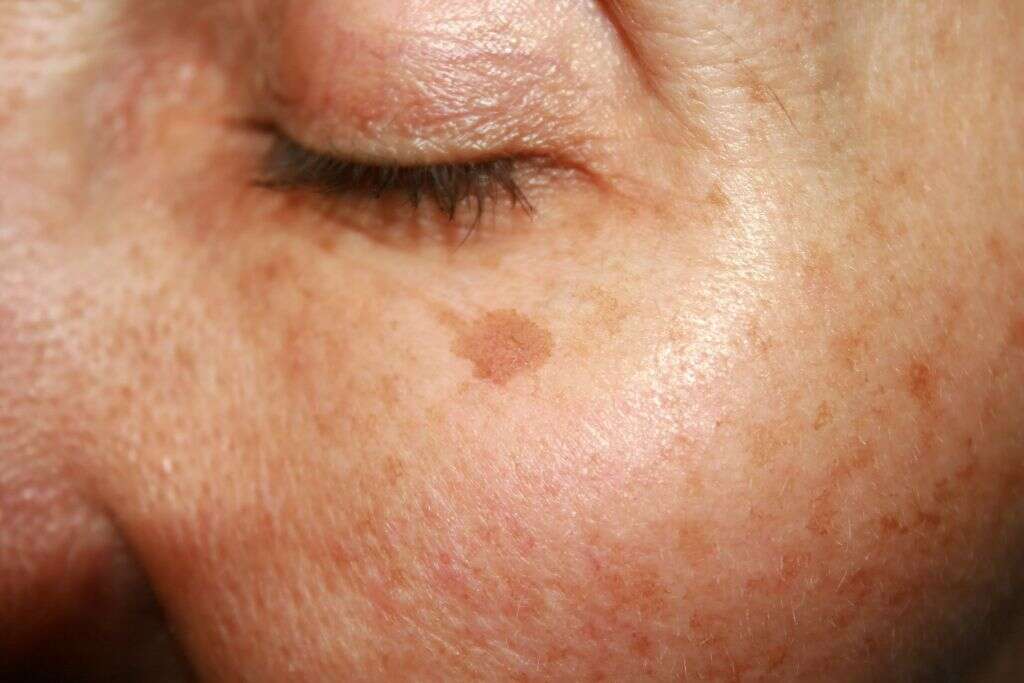
9. Skin Tags
Skin tags are a commonly occurring, small growth of skin that typically occur during the middle years of life. They tend to appear on areas of the body that have a crease, like an armpit, and are brown or red in color. The vast majority of them do not cause any issues and can be removed by a healthcare professional as a quick, outpatient procedure.8Pandey A, Sonthalia S. Skin Tags. [Updated 2020 Jun 1]. In: StatPearls [Internet]. Treasure Island (FL): StatPearls Publishing; 2020 Jan-. Available from: https://www.ncbi.nlm.nih.gov/books/NBK547724/ Sometimes people will choose to get them removed if the skin tag causes pain from getting caught on clothing or if the person just does not like the look of it.
At 9%, skin tags do not occur as often as other signs of PCOS.5Keen, Mohammad Abid et al. “Cutaneous Manifestations of Polycystic Ovary Syndrome: A Cross-Sectional Clinical Study.” Indian dermatology online journal vol. 8,2 (2017): 104-110. doi:10.4103/2229-5178.202275 Luckily, as mentioned above, if skin tags do become a part of a person’s PCOS signs they are quite easy to take care of.
10. Irregularities with Ovulation
Ovulation will occur around the 14th day of a typical 28-day menstrual cycle. This knowledge is an excellent tool for people trying to become or trying to avoid becoming pregnant. Some women may be able to identify when they are ovulating based on the symptoms that they experience such as sharp pain on one side of the lower abdomen where an ovary is located and perhaps light spotting. There exist irregularities as to when ovulation actually occurs and sometimes ovulation may not happen at all. At times, there is nothing to worry about, but if this is a frequent occurrence then it is important to get help figuring out why in order to avoid possible future infertility problems.
Irregularities or lack of ovulation is a very common sign of PCOS and also helps to identify the syndrome.7Ndefo, Uche Anadu et al. “Polycystic ovary syndrome: a review of treatment options with a focus on pharmacological approaches.” P & T : a peer-reviewed journal for formulary management vol. 38,6 (2013): 336-55. The reasoning behind issues with ovulation is due to, you guessed it, high levels of testosterone, and also some other factors.4Johansson, Julia, and Stener-Victorin, Elisabeth. “Polycystic ovary syndrome: effect and mechanisms of acupuncture for ovulation induction.” Evidence-based complementary and alternative medicine : eCAM vol. 2013 (2013): 762615. doi:10.1155/2013/762615


